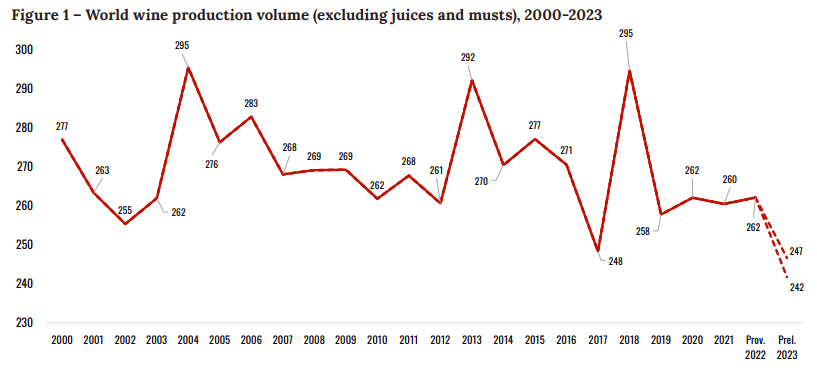
The International Organisation of Vine and Wine (OIV) has reported that the world wine production for 2023 is expected to be the smallest in over six decades due to severe climatic events affecting yields across the globe.
The European Union anticipates a lower output, with Italy and Spain experiencing significant declines due to adverse weather leading to diseases and drought. France, conversely, is set to become the leading producer this year, slightly exceeding its five-year average. In contrast, the United States predicts a rise in wine production, surpassing both 2022 figures and recent averages.
The Southern Hemisphere has been particularly hard-hit, with countries like Australia, Argentina, Chile, South Africa and Brazil reporting substantial decreases in wine production, with changes ranging from -10% to -30% compared to the previous year. New Zealand stands as the exception, with an anticipated output beyond its five-year average.

The world wine production is estimated to fall between 241.7 and 246.6 million hectolitres, a reduction of around 7% from 2022’s already low volumes, marking the smallest production since 1961. The full impact of this decrease remains to be seen, as data from key producers like China is still pending and the high fluctuation in wine production volumes makes accurate forecasting challenging.
A more detailed report, ‘World Wine Production Outlook’, is available on the OIV web site (PDF).













